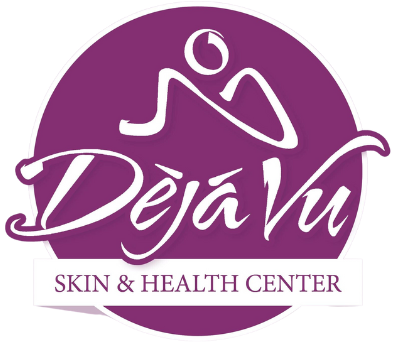Phone: 812-490-SKIN (7546) Fax: 812-490-1060
4943 Rosebud Lane Newburgh, IN 47630
Proud Allergan® Diamond Status Partner
What Is Rosacea?
Rosacea is a chronic skin disorder of the facial skin, usually mainly on the cheeks. The disease causes redness and flushing, broken blood vessels and inflammation of the skin. Rosacea is not curable but there are effective means of control.
Many things, sometimes things that are unique to a given patient, can trigger the flushing that is often a dominant feature of rosacea. Many triggers, however, are very common. Common triggers include:
Types of Rosacea
Type 1: Erythematotelangiectatic rosacea (facial redness). This type of rosacea can have intermittent flushing and redness or constant redness. It may have broken blood vessels, sensitive skin, skin swelling and/or dry and scaly skin texture.
Type 2: Papulopustular rosacea (red bumps and pimples). This type of rosacea has inflammatory papules (red bumps) and pustules (white heads) on the face. There may also be persistent redness, broken blood vessels, flushing and other features of Type 1.
Type 3: Phymatous rosacea (nose enlargement). The finding of Type 1 and/or 2 with skin and sebaceous hypertrophy—enlargement of the skin and nose.
Type 4: Ocular rosacea (eye involvement). This type of rosacea has eye involvement such as dry eyes, broken blood vessels on the eyelids, abnormal tearing or other eye problems.
Rosacea Treatments
Traditional advice to avoid triggers, apply cool compresses and seek a cool environment is not usually practical for most patients. Rosacea patients have sensitive skin and must take care of it. Frequent use of a quality moisturizer can help reduce skin sensitivity. The skin should be gently cleaned with lukewarm water and a mild non-soap cleanser. Patients should also avoid application of irritating topical products such as toners, astringents and chemical exfoliating agents. Also, application of a quality sunscreen everyday may be helpful.
-
Medications for Rosacea
A variety of medications are used to reduce flushing, including clonidine, gabapentin, antidepressants, beta blockers and topical oxymetazoline (the drug in the decongestant Afrin). Most patients are not satisfied with these treatments.
25-30% of patients with chronic redness may benefit from topical brimonidine 0.33% gel. Unfortunately, there are many side effects of this medication and it can cause rebound redness.
Type 2 patients may benefit from topical metronidazole 0.75% or 1% cream or gel once or twice a day, Azelaic acid 20% cream or lotion or 15% foam or gel or ivermectin 1% cream.
Some patients benefit from medications used for acne treatment such as tretinoin, benzoyl peroxide, and clindamycin.
If topical medications are not effective, patients may benefit from the oral antibiotics tetracycline, doxycycline and minocycline. However due to the development of antibiotic resistance over the last decades, long-term use of oral antibiotics is not used as often as in the past.
-
Laser & Intense Pulsed Light
Laser and intense pulsed light have become an effective means of getting rosacea under control and even in remission. Rosacea has a prominent vascular component that can be effectively treated with these modalities. The typical patient with chronic redness, with or without broken blood vessels, can be significantly cleared up with 3-5 treatments at monthly intervals. Significant improvement can be seen in flushing, redness, skin sensitivity and skin texture. Once under control, 1 or 2 treatments per year are recommended to keep it under control.
We use the Sciton® BBL™ (broad band light) system for our intense pulsed light treatments. We use the Sciton® laser to clear up broken vessels that do not respond to BBL™.
We treat patients with all of the modalities listed above. A few insurance companies cover laser/IPL treatments for patients with prominent rosacea that is bad enough to interfere with normal activities. Medicare does not cover laser/IPL treatments. All insurance plans cover most medications and office visits for rosacea treatment. Contact our office located in the Newburgh/Evansville area to discuss treatment options best for you!
-
Flat Moles
Flat moles usually require an excision through the skin and closure with sutures. We can do these procedures anywhere on the body including the face. If a lesion is particularly complicated, we will not hesitate to refer a patient to a plastic surgeon for removal. We remove small facial lesions under magnification and close the opening with very tiny sutures to give the best results.
-
Broad Band Light
BBL™ (Broad Band Light) is an innovative light technology using a broad-spectrum pulse of light that focuses on facial blood vessels without damaging surrounding facial tissue. BBL is the mainstay of rosacea treatment today – it is safe, effective and the only type of therapy that treats the underlying diseased blood vessels. Most patients see dramatic improvement with 3-5 treatments at 3-4 week intervals. Patients may experience minimal discomfort during therapy and little downtime.
Other methods of treatments include oral and topical antibiotics. Antibiotics are often effective in the treatment of the skin damage of rosacea. Antibiotics are effective because of their anti-inflammatory properties rather than their anti-bacterial effects. A common topical antibiotic is MetroGel® (metronidazole). A commonly used oral antibiotic is doxycycline.
A low dose of Accutane® is effective in the treatment of the skin damage of rosacea. Since BBL cannot be performed within six months of the use of Accutane, BBL treatments are recommended first to treat blood vessels before Accutane therapy is commenced. Dr. Manley is an authorized Accutane prescriber.
Certain blood pressure medications may reduce flushing with physical activity. These drugs may be used in combination with BBL™ in patients who have problems with exercise-induced flushing.
Call Us Today!
Phone: 812-490-SKIN (7546)
Fax: 812-490-1060
Visit Us!
4943 Rosebud Lane
Newburgh, IN 47630
In the same building as Primary Care Plus+ & Evansville Regional Vein Center

